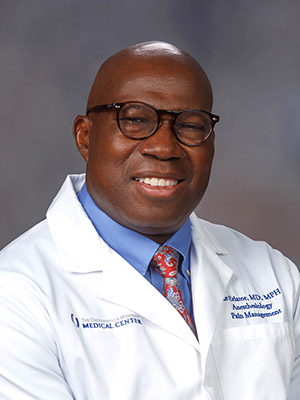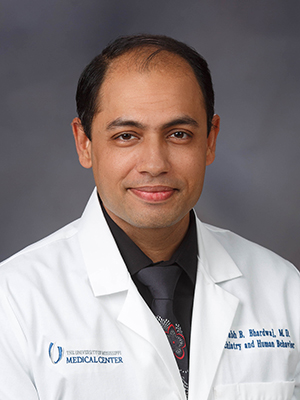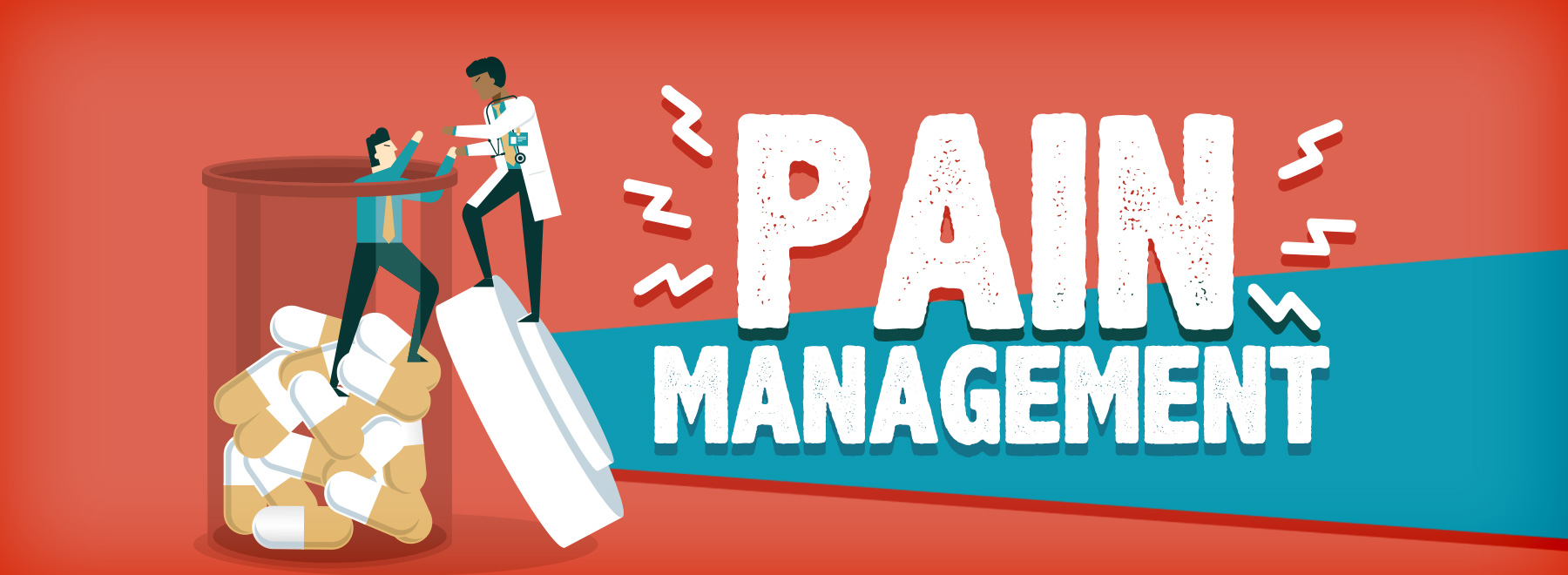Talking to doctors about opioids doesn’t have to be a pain
Chronic pain can be physically and emotionally exhausting, especially when treatment options feel limited. For many, opioids are controversial, due to their addictive nature, but still integral in managing pain. A patient may feel unsure or anxious to discuss the issue with a physician, especially since scrutiny regarding opioid use has grown so prevalent.
However, when used responsibly and under the right medical supervision, opioids can still be a viable part of a comprehensive pain management plan.

According to Dr. Ike Eriator, professor of anesthesiology at the University of Mississippi Medical Center, successful pain reduction is all about collaboration and communication between the patient and the physician. “Apart from medications, there are so many other ways to control pain,” he said. “Sometimes this helps decrease patients from being distraught or having perceptions of difficulties.”
Eriator emphasizes educating patients about opioid use is critical to not only managing their pain effectively in a healthy way but also possibly prevent addiction down the road.
Patients should stay abreast of the ever-changing medical landscape. The opioid addiction epidemic has led to stricter prescribing guidelines, increased regulation and growing pressure on providers to minimize or avoid opioid use. They aren’t off limits, but doctors are more cautious than ever and focused on balancing benefits with potential risks.
Patients should be aware that:
- Opioids are best used for moderate to severe pain that hasn’t responded well to other treatments.
- They are more commonly prescribed as part of a multimodal approach that includes physical therapy, non-opioid medications and behavioral strategies.
- Most doctors are more receptive when patients are informed, reasonable and open to alternatives.
Those in pain should start the discussion by being clear, detailed and honest about their pain. They need to describe:
- Where it hurts, when it started and how it feels (sharp, dull, burning, etc.)
- How it affects daily life
- Treatments tried and what did or didn’t work
Framing the conversation around partnership and open discussion shows a doctor the patient is prioritizing safety and effectiveness, not just quick relief. It builds trust. Doctors are more apt to prescribe opioids if a patient will follow a clear treatment plan that includes regular reviews and possible tapering.
“Communication and collaboration are the bedrock of a smooth-functioning ecosystem of care,” Eriator said.
Sometimes, opioids alone aren’t the answer. But they may be effective in combination with other treatments. A patient should show openness to treatment like:
- Non-opioid medications (NSAIDs, antidepressants, anticonvulsants)
- Injections or nerve blockers
- Physical or occupational therapy
- Cognitive Behavioral Therapy (CBT) for pain
For now, alternatives for pain treatment include: longer-acting opioids, opioids in conjunction with analgesics or other medications or opioids with physical therapy slowly tapering the patient off the medication as they improve, according to Eriator.
There is hope for an alternative, however. Research publications report inroads have been made in creating a non-opioid pain medication without the usual side effects. After a quarter of a century of research work, labs have created a channel-blocking molecule viewed as safe, effective and precise enough to address the opioid epidemic.
“In the meantime, by bridging science and faith and working together, we can use opioids for pain management effectively for better health,” Eriator said. “Countless synthetic opiate compounds have been synthesized over the last century in an attempt to create the ‘perfect’ analgesic – devoid of all opioid side effects. For now, though, we need to use what we have in the best way.”

Dr. Saurabh Bhardwaj, associate professor in the UMMC Department of Psychiatry and Human Behavior and medical director for the Center for Innovation and Discovery in Addictions agrees. He is addressing a problem unique to opioids – the medication treating pain, causing more pain and creating a cycle of taking more and more opioids to alleviate pain.
“Sometimes with opioid treatment, it can block the sensory mechanism that allows animals to actually sense and avoid painful things. And it’s critical for your defense and survival,” Bhardwaj said. “In addition, opioids can induce additional pain later, causing patients to increase dosages on their own. But when they continue experiencing pain, they feel the need for more and more opioids.”
By rotating types of opioids for treatment, short- or long-acting as needed, or prescribing lower doses, and combining either with physical therapy, “the outcome can be great,” Bhardwaj said. The goal is to find something to take care of the pain that’s not going to create other conditions.
Talking to a doctor about opioids prescriptions for pain can feel intimidating. But a patient informed, thoughtful and open to a range of options can have a productive conversation with a health care provider and find the best path forward for health and quality of life.
The above article appears in CONSULT, UMMC’s monthly e-newsletter sharing news about cutting-edge clinical and health science education advances and innovative biomedical research at the Medical Center and giving you tips and suggestions on how you and the people you love can live a healthier life. Click here and enter your email address to receive CONSULT free of charge. You may cancel at any time.



